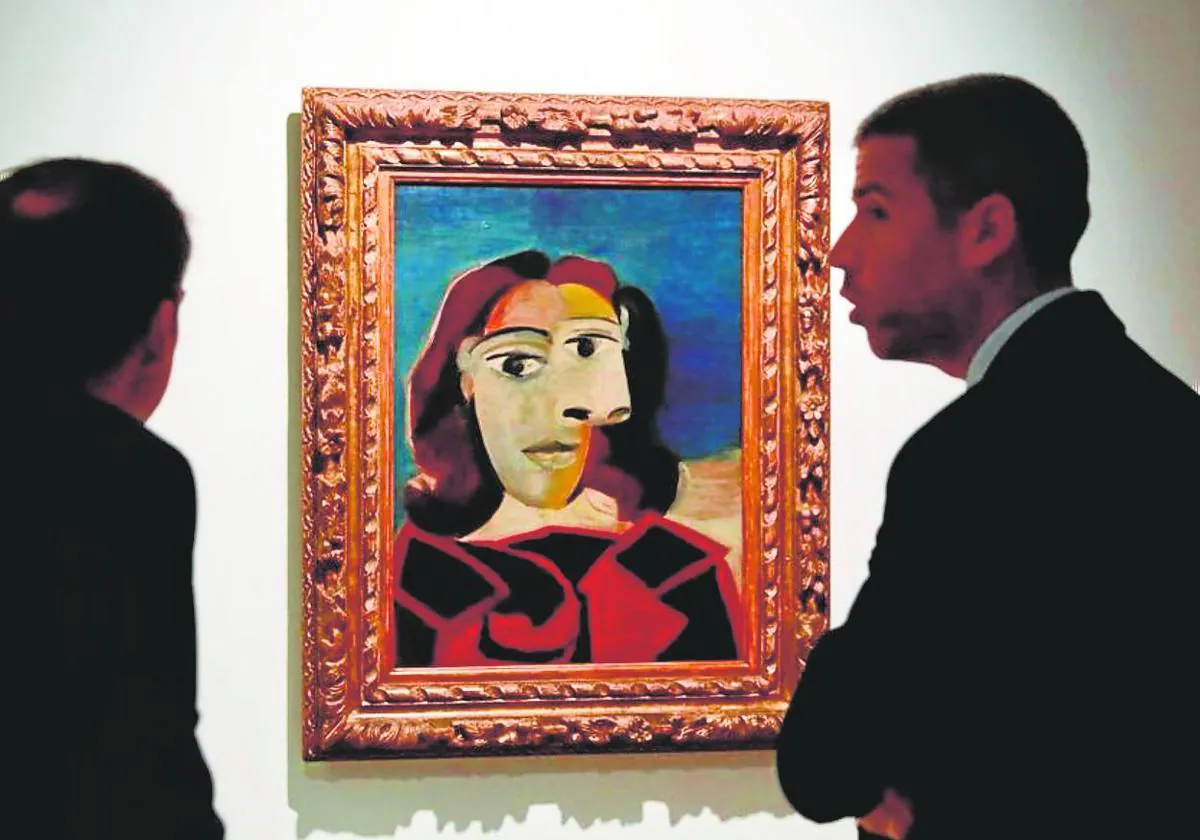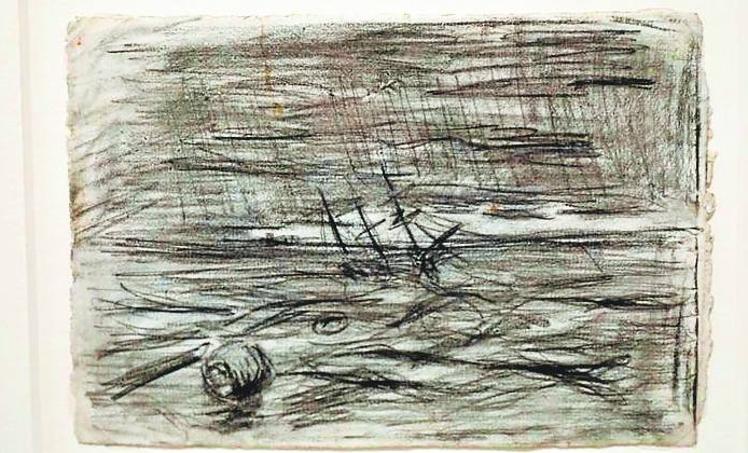

Sections
Highlight

Francisco Griñán
Friday, 30 June 2023, 13:31
. A widely held, unsubstantiated belief is that Picasso denied his Malaga origins. Dispelling that misconception is Celebrating Picasso 1973-2023, a series of international events, promoted jointly by the governments of Spain and France to show off the work of the Malaga-born artist on this anniversary. With ‘Picasso Sculptor ‘ opening at the Malaga Picasso Museum (MPM) last month, the Casa Natal (the house of his birth) is hosting The Ages of Pablo - its principal exhibition for 2023. A chronological and stylistic overview of Picasso’s work and life, including his formative years in Malaga, influenced by masters like local painter Muñoz Degrain.
“This exhibition is not so much a tribute to Picasso, but to Pablo, the boy from Plaza de la Merced,” declared Mario Virgilio Montañez (exhibition curator), who, together with the Casa Natal team, spent two years pulling this together. To highlight Malaga’s connection with Picasso’s infancy, the exhibition presents five original works dating from his time in Malaga (mostly rural landscapes, pencil and oil) by the child artist.
The tour begins with a tiny oil on board, Sunset and Flock of Sheep (1896). Opposite, the striking canvas, Mountains of Malaga (1896). “It is an important oil painting because it’s not just about going to the mountains with an easel to paint under the sun to the sound of cicadas, but also that, at 14, he’s already painting better than his father by matching, bowing to, and even surpassing the style of the master, Muñoz Degrain, with his brushwork,” explained Montañez, pointing out Head of a Bearded Man (1896-9), academically acclaimed for placing the young Picasso “on another level”.
Alongside the above, a dark drawing (not shown before in Malaga), The Wreck of the Frigate Gneisenau in the Port of Malaga (1899-1900), a disaster witnessed by Picasso and his friend Casagemas en route to Malaga a few days after the tragic shipwreck .

“We previously wanted to bring it here but it’s a very delicate piece. Fortunately, Celebrating Picasso has opened the treasure trove,” said Montañez. Thanks to collaboration with the Picasso Museum of Barcelona for the ’formative years’ part of the exhibition, these works are on loan to Malaga, (bequeathed to the Catalan capital following the death of Picasso’s mother).
Mayor of Malaga Francisco de la Torre and the director of the Casa Natal, José María Luna, opened the exhibition The Ages of Pablo last Friday. With them was Carlos Alberdi, head of Celebrating Picasso 1973-2023, who congratulated the Casa Natal for its unique approach to this exhibition. It is divided into seven sections, from Formative Years, with works from Malaga, to the final stage of Picasso’s time with Jacqueline Roque.
Thus, 76 years of uninterrupted creativity using different media are captured in this exhibition, sponsored by Fundación La Caixa and Telefónica.
Paintings, drawings, sketches, photographs, sculpture and ceramics from Reina Sofía Art Centre, Picasso Museum of Barcelona, Fundació Palau, Fundación Mapfre, Ico Collections and the Arias family, who have loaned the iconic The Dream and Lie of Franco for the Wartime section. His blue and pink eras also have a section, mostly dedicated to circus and street people. Also cubism: the preparatory sketchbook for The Ladies of Avignon (1907), and Harlequin and Pulcinella (1924).
Classicism and surrealism are not lacking in this retrospective either. The highlight of the Wartime section is the iconic Portrait of Dora Maar (1939), completed just five days before the end of the Spanish Civil War.
Darkness gives way to Joie de Vivre from the ‘50s, featuring the artist with Francois Gilot (recently deceased). Also typical Picasso: Two Figures and a Dove (1956). The tour ends with Juan Gyenes’ photos of Picasso and Jacqueline Roque, closing with one of the largest pieces in the exhibition - a self-portrait - Painter at Work (1964).
The director of the Picasso Casa Natal museum, José María Luna, believes this exhibition of 58 works highlights Picasso’s life experiences viewed from his origins, with images of Malaga that became iconic in his art, revealing the influence of his native city.

It is known that he painted this work in Malaga. In the summer of 1895 he returned south to visit relatives. He would have been 13. A teenager with a good hand for drawing and a sense of patriotism, judging by the central motif: a large Spanish flag falling to the ground. The work is entitled Allegory of Glory, although it is also known as Allegorical Exaltation of the Flag, and is full of hidden or disguised messages. Words can be guessed at where they cannot be fully deciphered, except for what’s inscribed in blue ink over the red-and-gold insignia: “Malaga”. This allusion to the painter’s birthplace not only gives a clue as to where Picasso drew this early work, but also allows us to decode other symbols, such as the tower of the city’s cathedral and the coat of arms for Malaga.
The local references to Malaga are pointed out by the exhibition’s curator, Mario Virgilio Montañez. He specifically chose this pen-and-ink watercolour on laid (ribbed) paper as the image for the promotional poster of the exhibition, The Ages of Pablo, to underline the artist’s connection with his native city for this Year of Picasso, commemorating the 50th anniversary of the painter’s death. The cathedral tower reaches for the sky, drawn only in dark outline, to the left of the work, while to the right, the green and purple colours can be perfectly appreciated as they form the coat of arms for Malaga city.
These are not the only elements that could have a Malaga connection. Montañez points out that the figure of the angel that appears above the flag, blowing a trumpet “is very reminiscent of a similar figure on the ceiling of the old María Cristina conservatory”, so it is possible that the young Pablo was inspired by this precedent. Birds that look like doves - perhaps the origin of the Picasso Dove so prevalent and symbolic in his later work? - also feature in the watercolour. With an invitation to spot the symbols, this artwork was the most looked at and pored over at the opening last Friday.
The only indecipherable character in this work from the collection of the Picasso Museum in Barcelona, is of a naked boy playing the drums, who probably also had a model for inspiration. There in lies the challenge.
Publicidad
Publicidad
Publicidad
Publicidad
Esta funcionalidad es exclusiva para registrados.
Reporta un error en esta noticia

Debido a un error no hemos podido dar de alta tu suscripción.
Por favor, ponte en contacto con Atención al Cliente.

¡Bienvenido a SURINENGLISH!

Tu suscripción con Google se ha realizado correctamente, pero ya tenías otra suscripción activa en SURINENGLISH.
Déjanos tus datos y nos pondremos en contacto contigo para analizar tu caso

¡Tu suscripción con Google se ha realizado correctamente!
La compra se ha asociado al siguiente email
Comentar es una ventaja exclusiva para registrados
¿Ya eres registrado?
Inicia sesiónNecesitas ser suscriptor para poder votar.